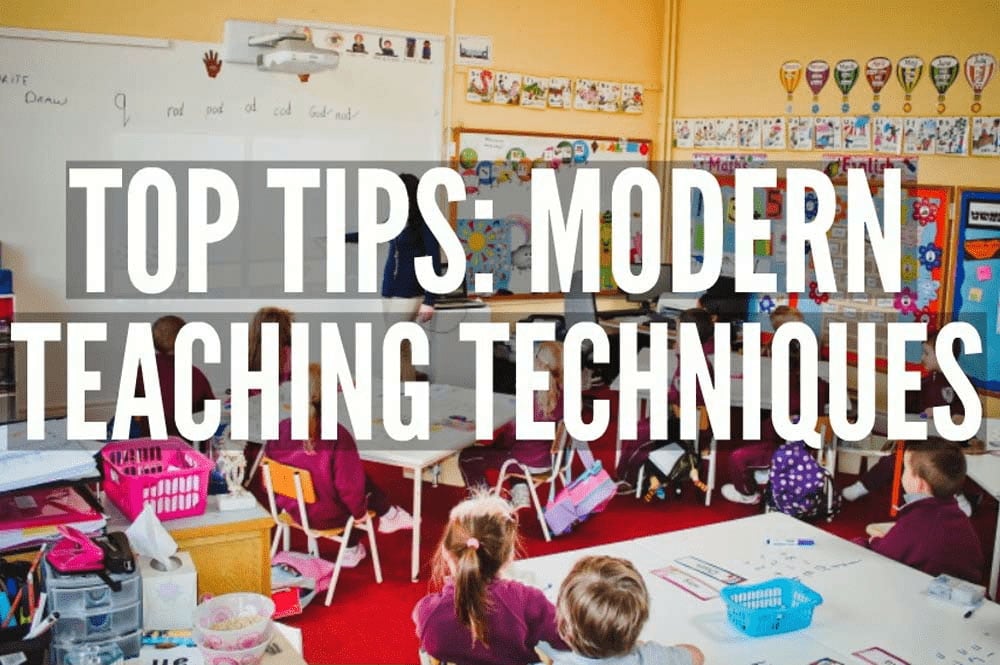The Top 3 Modern Teaching Methods

Traditional teaching methods favored a teacher-centric classroom model where students would learn and recite information back to the teacher. Traditional methods also assumed that all students were of the same intellectual ability.
Nowadays, educators are ditching these old ways and opting for more modern teaching methods to further enhance and support every student’s needs.
They are much more focused on student engagement, encouraging collaboration and curiosity as well as adopting new technologies in the classroom.
Revolutionize Education with Modern Teaching Methods
Below is a list of three modern teaching methods that we think can change the way students learn and improve performance in the classroom.
1. The Flipped Classroom Technique
As the name suggests, this teaching technique takes place in a flipped manner, meaning the students study new material or content at home by themselves then practice and conclude the same material at school. The method is the reverse of giving work at school for students to rework on or practice at home.
Students will complete their own research and view video tutorials or other online sources (usually created and posted by their teacher) instead of completing traditional “homework” assignments.
This research is then completed in class with prepared content learned and brought in from home, creating a more engaging and collaborative learning environment.
A flipped classroom means students are able to work at their own pace and have time to digest the material or take more time with it if necessary; unlike traditional methods where there’s mere minutes to understand brand new information.
Teachers can offer one-on-one instruction to ensure students fully grasp the material or students can have a class discussion.
Flipped classrooms mean that sick days no longer interrupt the students’ ability to learn. Whether a teacher or student is absent, it will not detract from the students learning.

2. Test Out Collaborative Learning
Until relatively recently, traditional teaching methods meant that students’ revision took place in isolation. This was said to hinder progress.
To solve this problem, schools are becoming practitioners of collaborative learning. This involves placing students together in small groups to work on collaborative writing, joint problem solving, debates and more.
The benefits are students cover the course material and develop social skills that are invaluable when they join the workforce.
Each student is responsible for the group’s success as a whole and they have to learn to relate to and communicate with peers in an effective way. Working on team-building skills, students learn tolerance and healthy criticism as they are exposed to different personality types.
With collaborative learning, students are given more personal feedback.
If you decide to introduce collaborative learning in your classroom, it’s important to make small changes to the layout of your room.
One resourceful idea we’ve seen used in collaborative classrooms is transforming desks into whiteboard surfaces. This allows for groups to work together on the same page and simply wipe off their work when finished and start afresh on a new problem. (smileyspoints.com)

3. What About Spaced Learning?
Spaced learning is a new technique being adopted by teachers in which a lesson is repeated three times with two 10-minute breaks in-between. During the break periods, physical activities or mindfulness techniques are performed by the students in an effort to refresh them for the next lesson.
Central to this teaching technique is the idea that the students create connections they need to actually remember the knowledge.
It allows students to relax with the information and fully understand it before moving on to the next part of the syllabus.
Spaced learning truly defines the proverb that a healthy mind is in a healthy body. It gives students who only enjoy PE lessons the motive to learn and ensure students who are more studious are remaining active.
Childhood obesity in schools is becoming more and more topical. Teachers adopting this approach are praised more than ever.
Its creator has also argued that it achieves better grades and improves the mental health of its users.

Before implementing any change, make sure it is the right strategy for you and your school. Talk to us about your goal and our experts will help you find the best product to upgrade your school. Take advantage of our educators’ program and get personalised support, free shipping, and credit payment options.
Here are some case studies for you to better understand our product and how it is useful for educational organizations.


